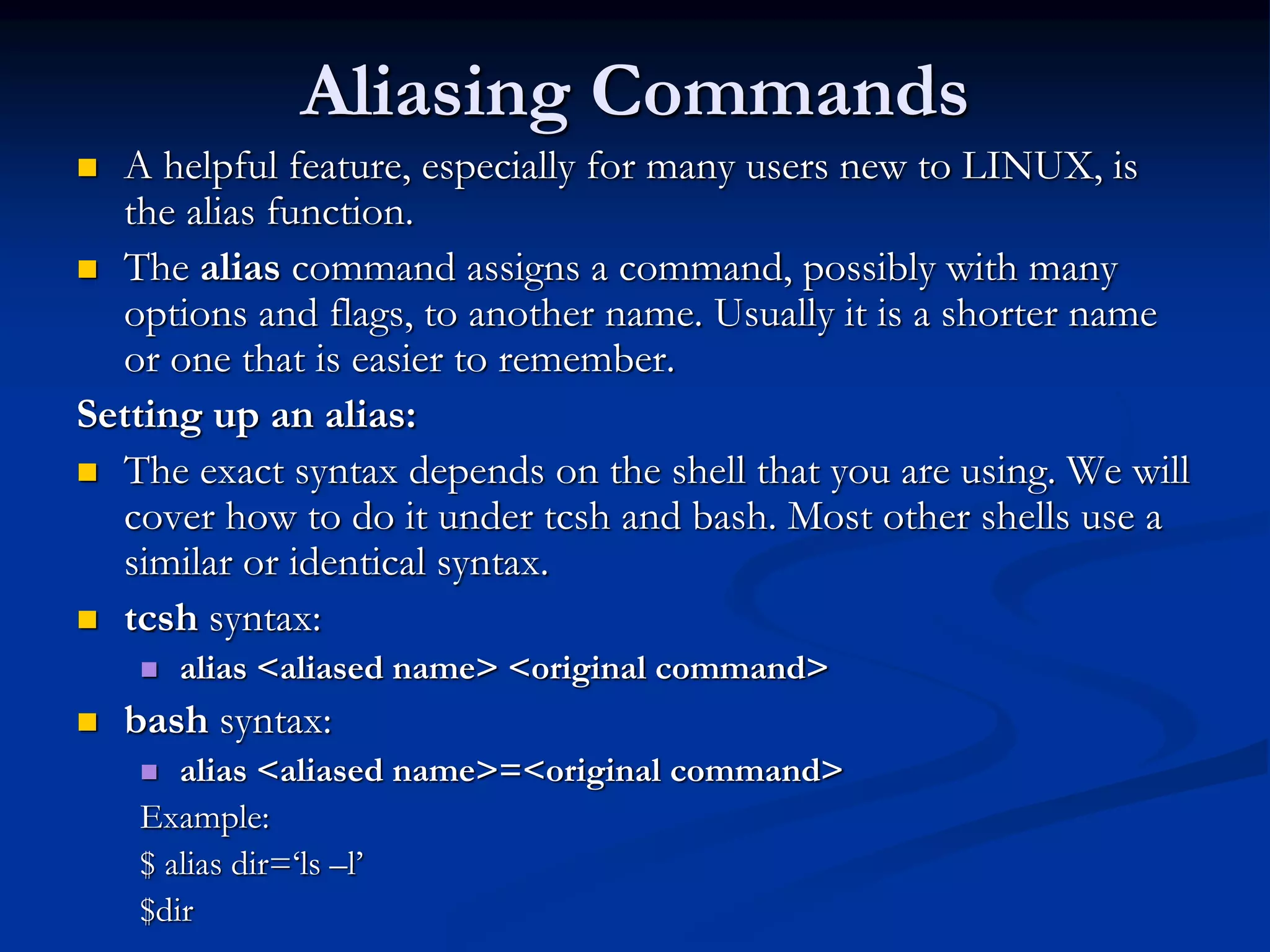This document provides an overview of Linux shells and shell environment variables. It discusses that shells provide a command line interface to allow users to enter commands and that common shells include bash, tcsh, csh, ksh, and sh. It also describes global and local environment variables, how to view, set, and remove them, and important default variables like HOME, PATH, and MAIL. Finally, it covers features like variable arrays, aliasing commands, and shell startup files.

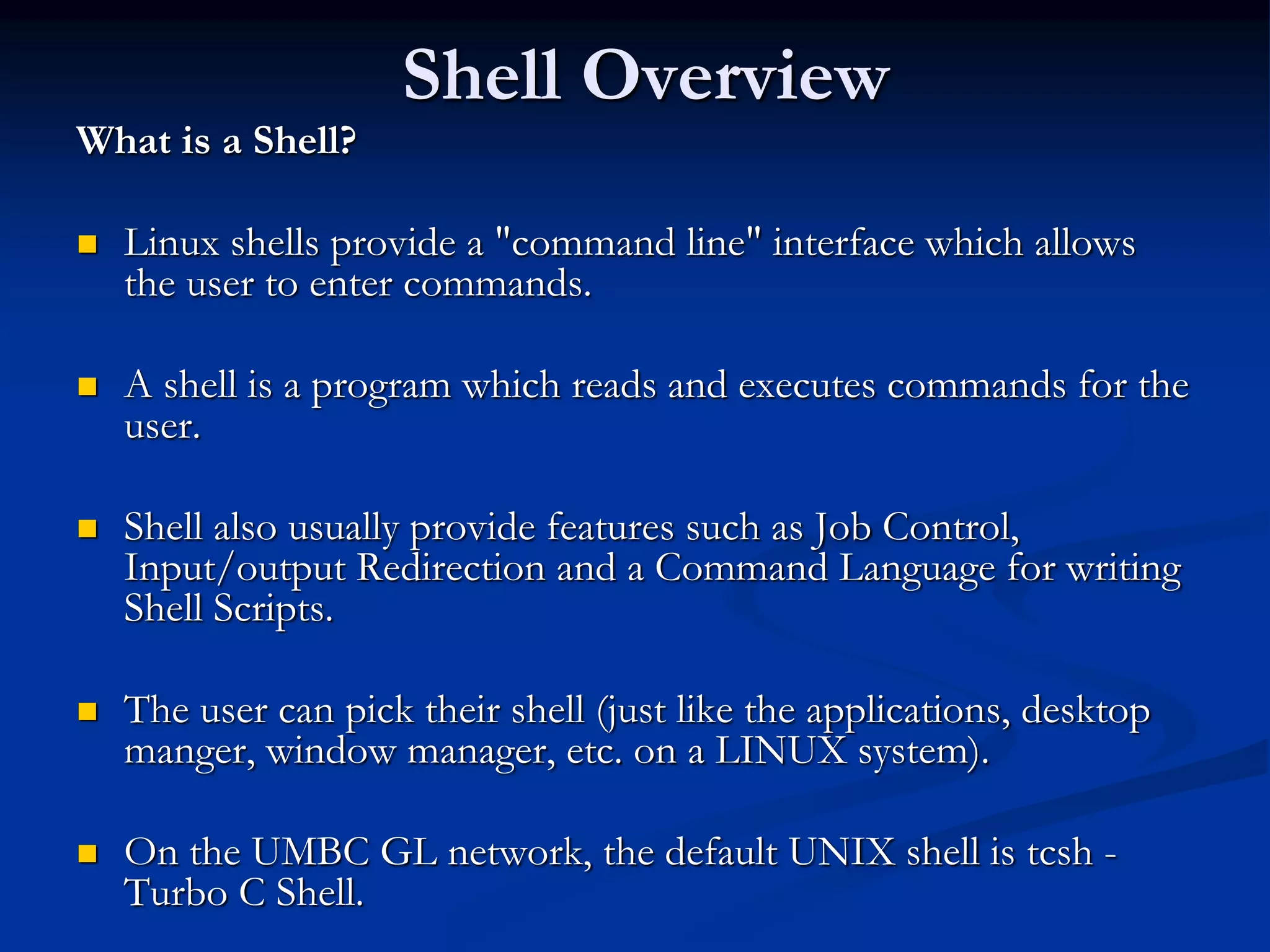

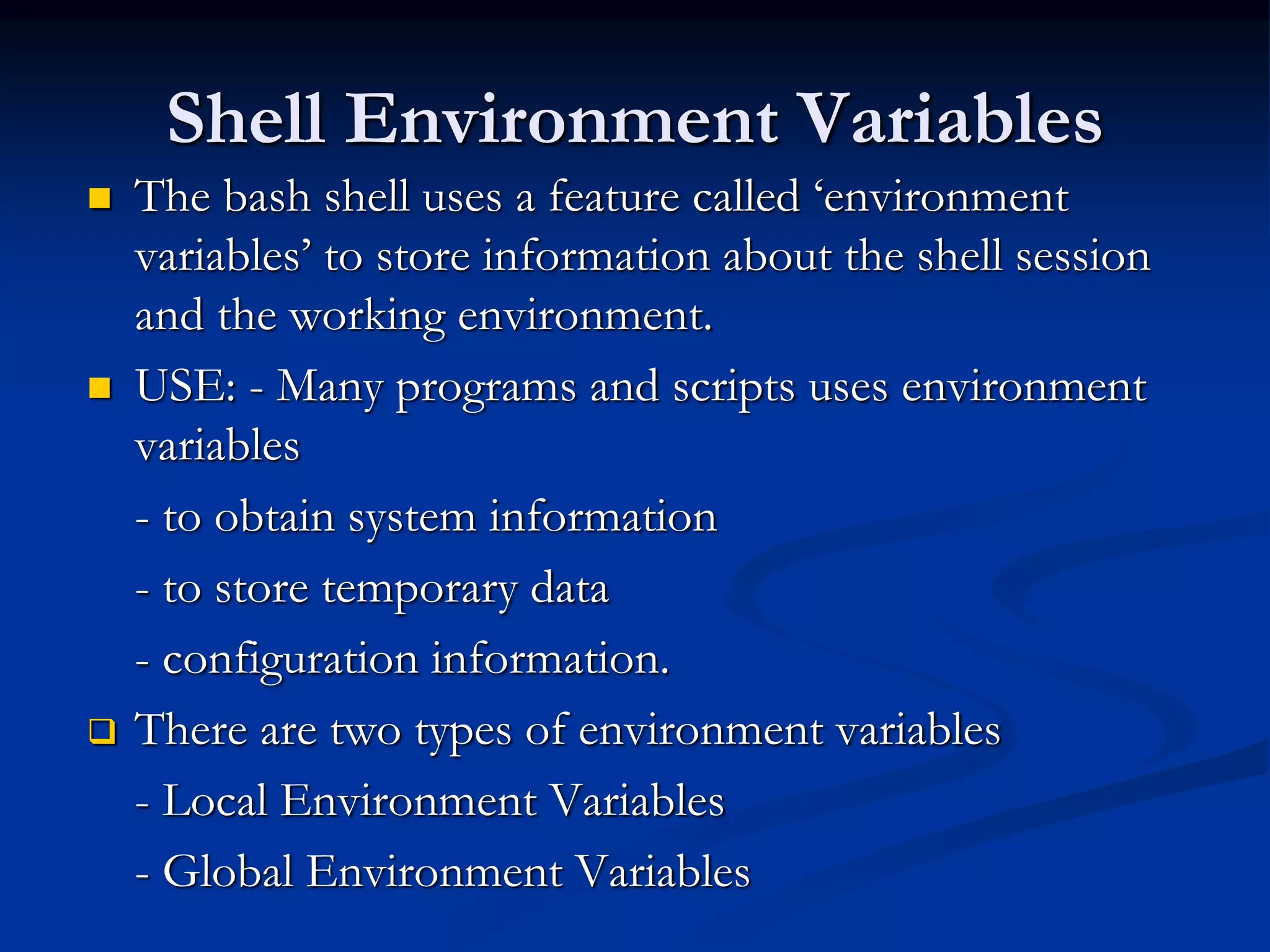
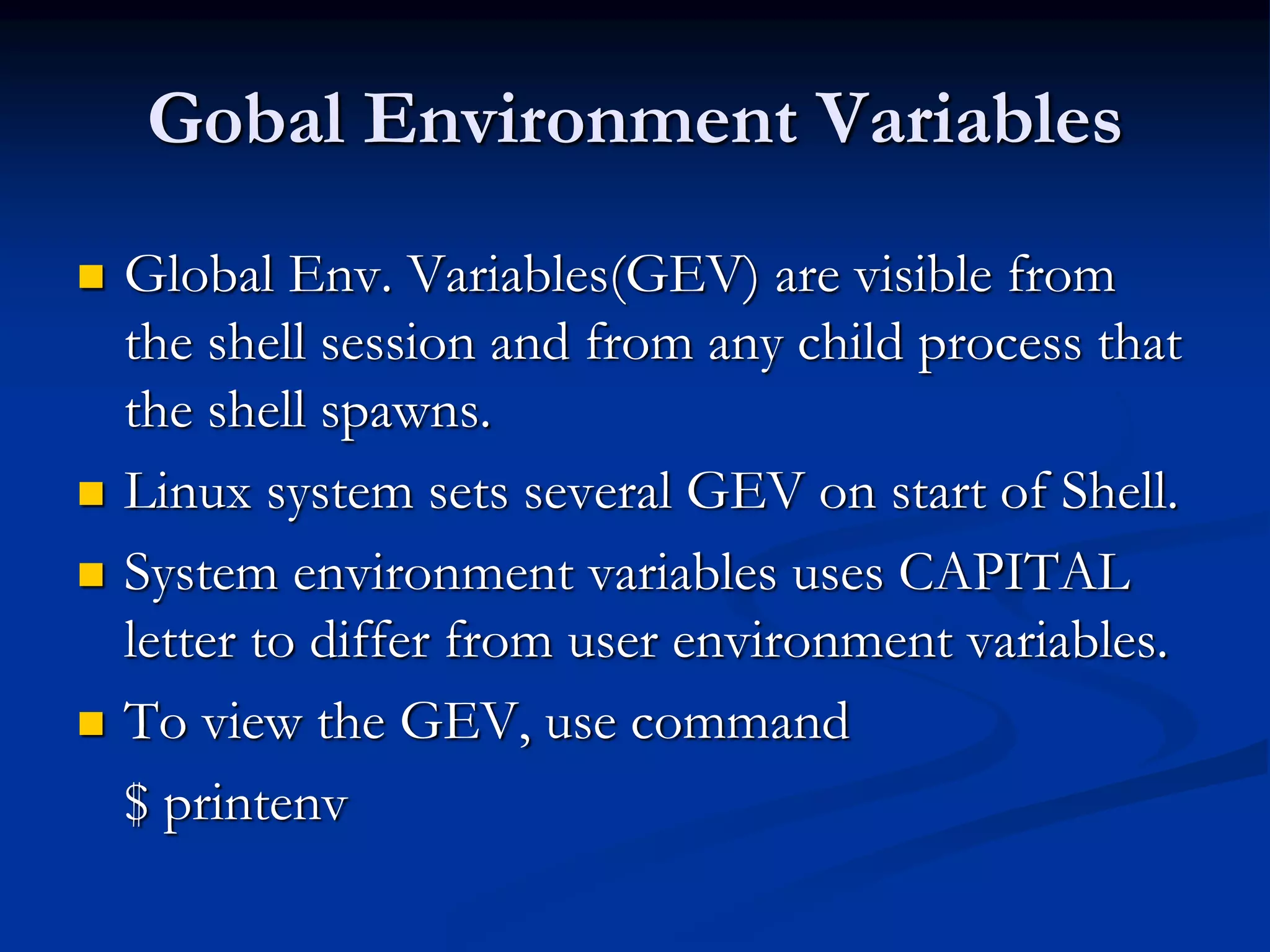
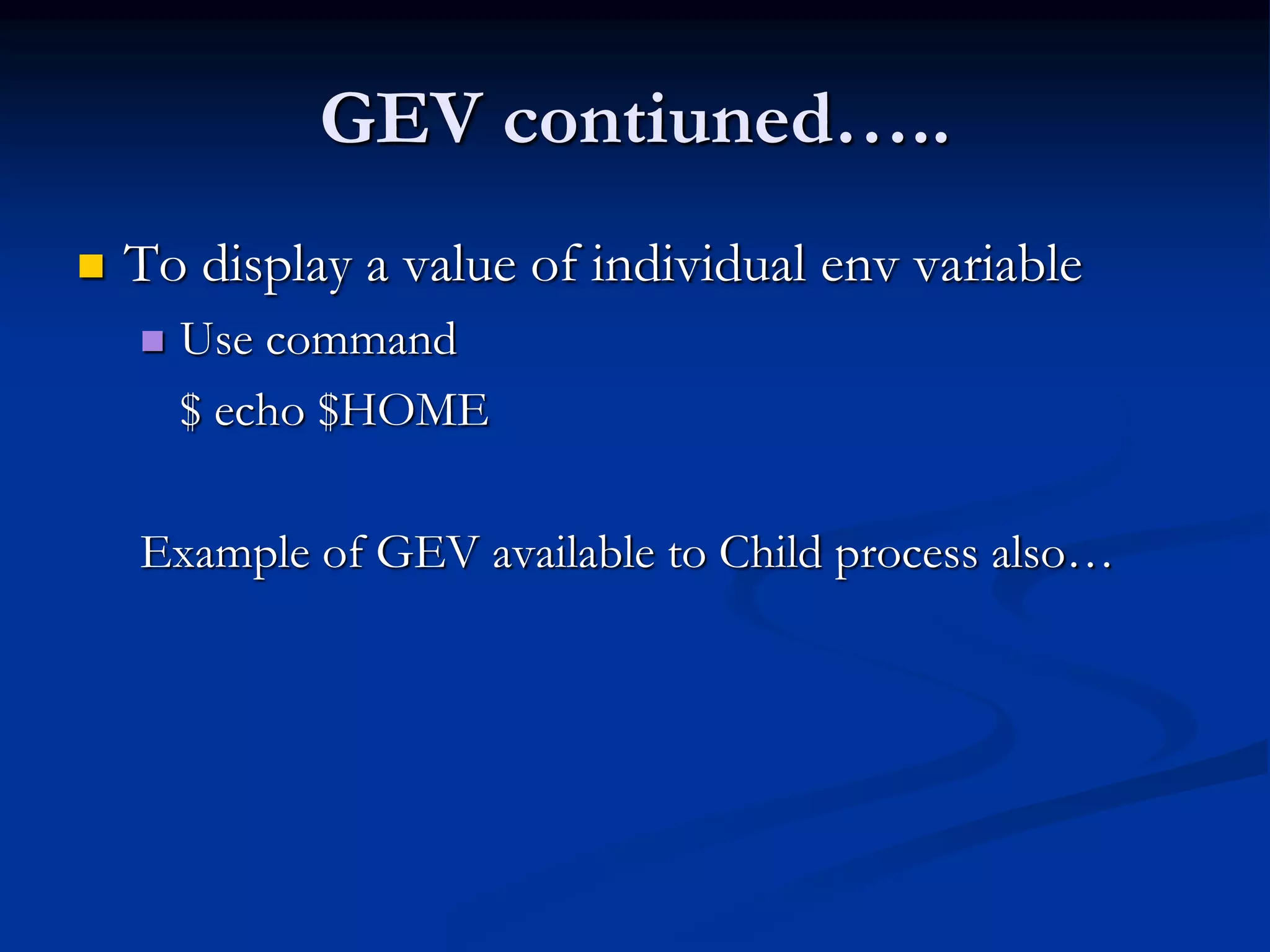
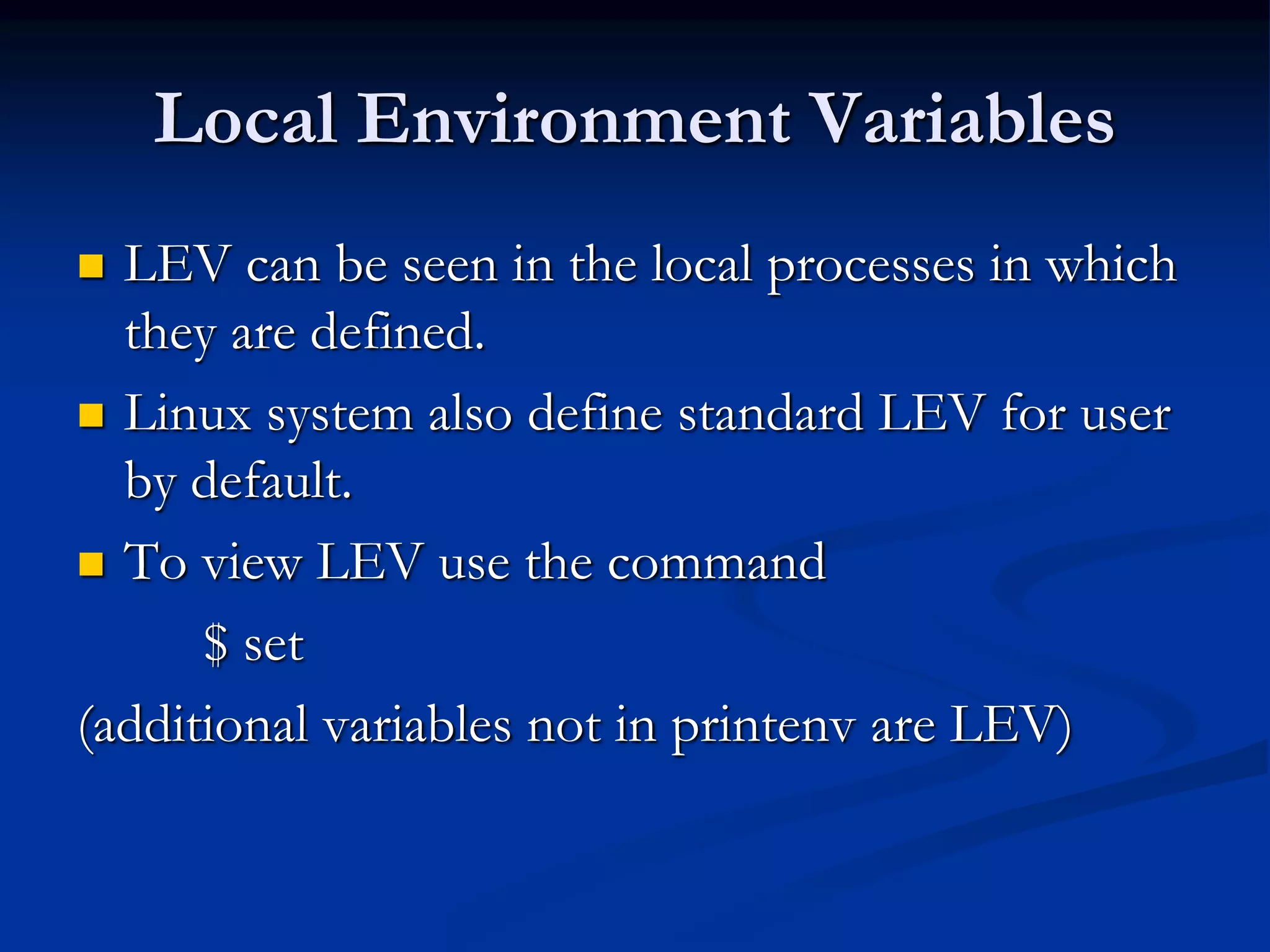
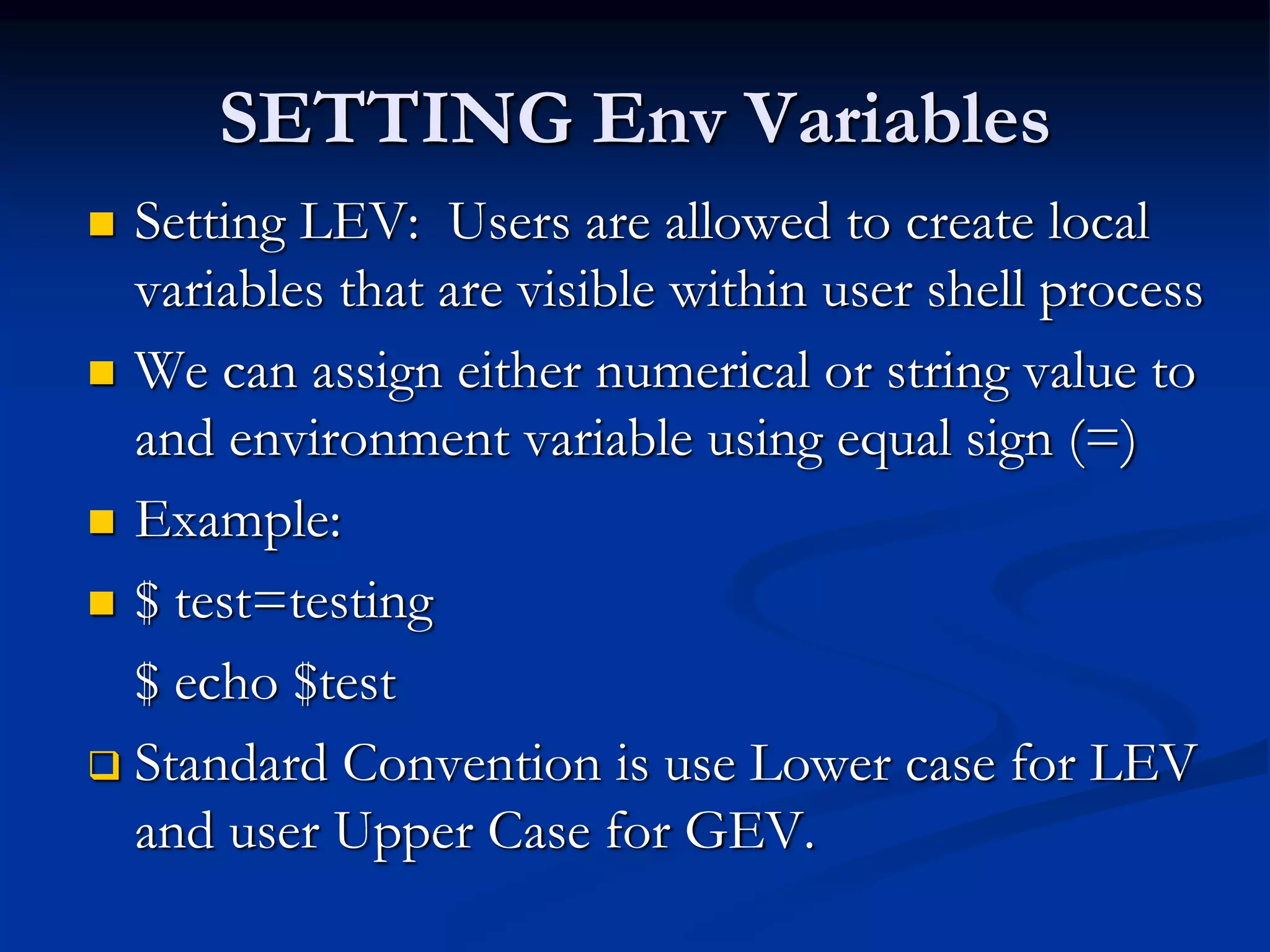

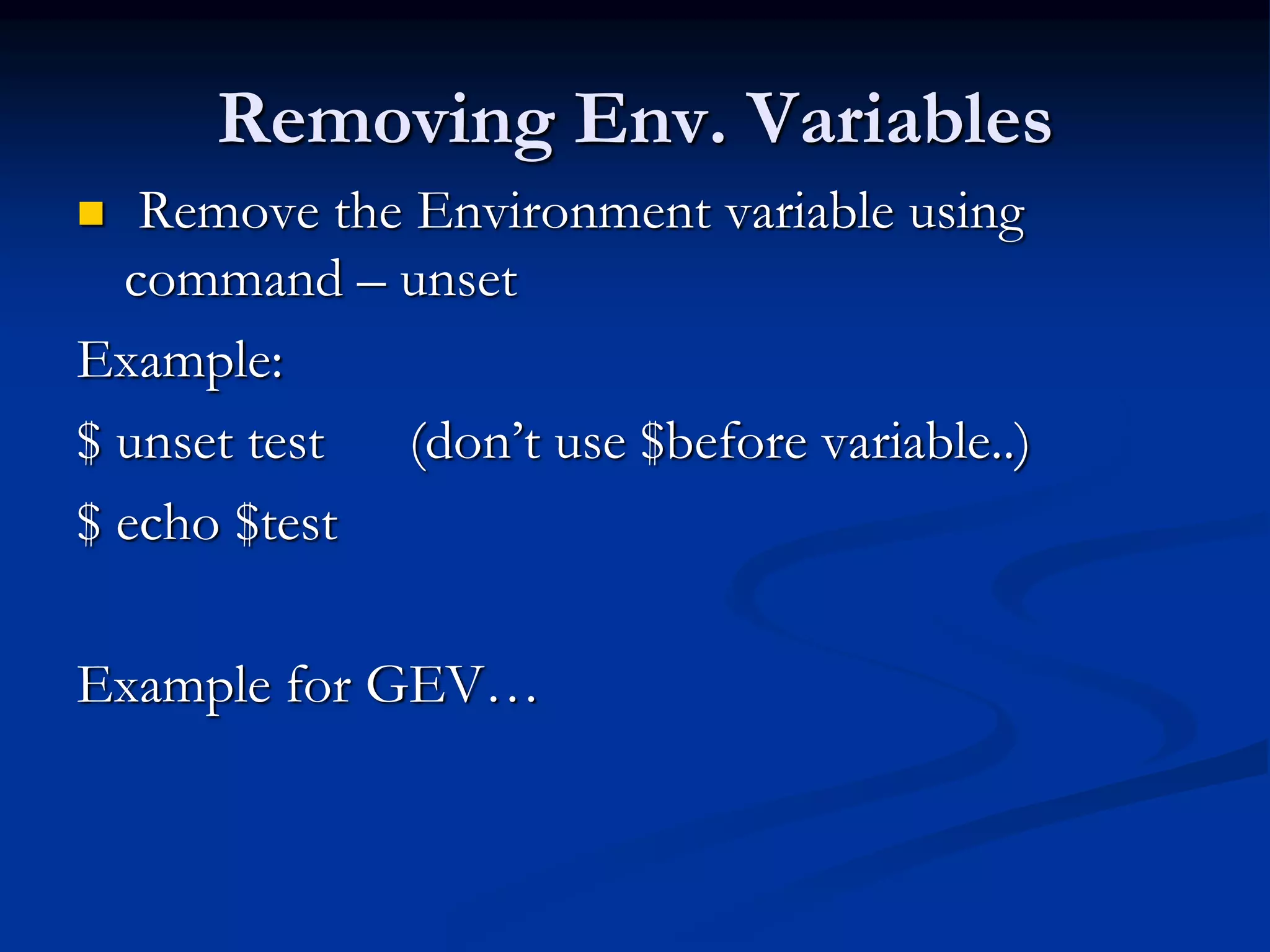
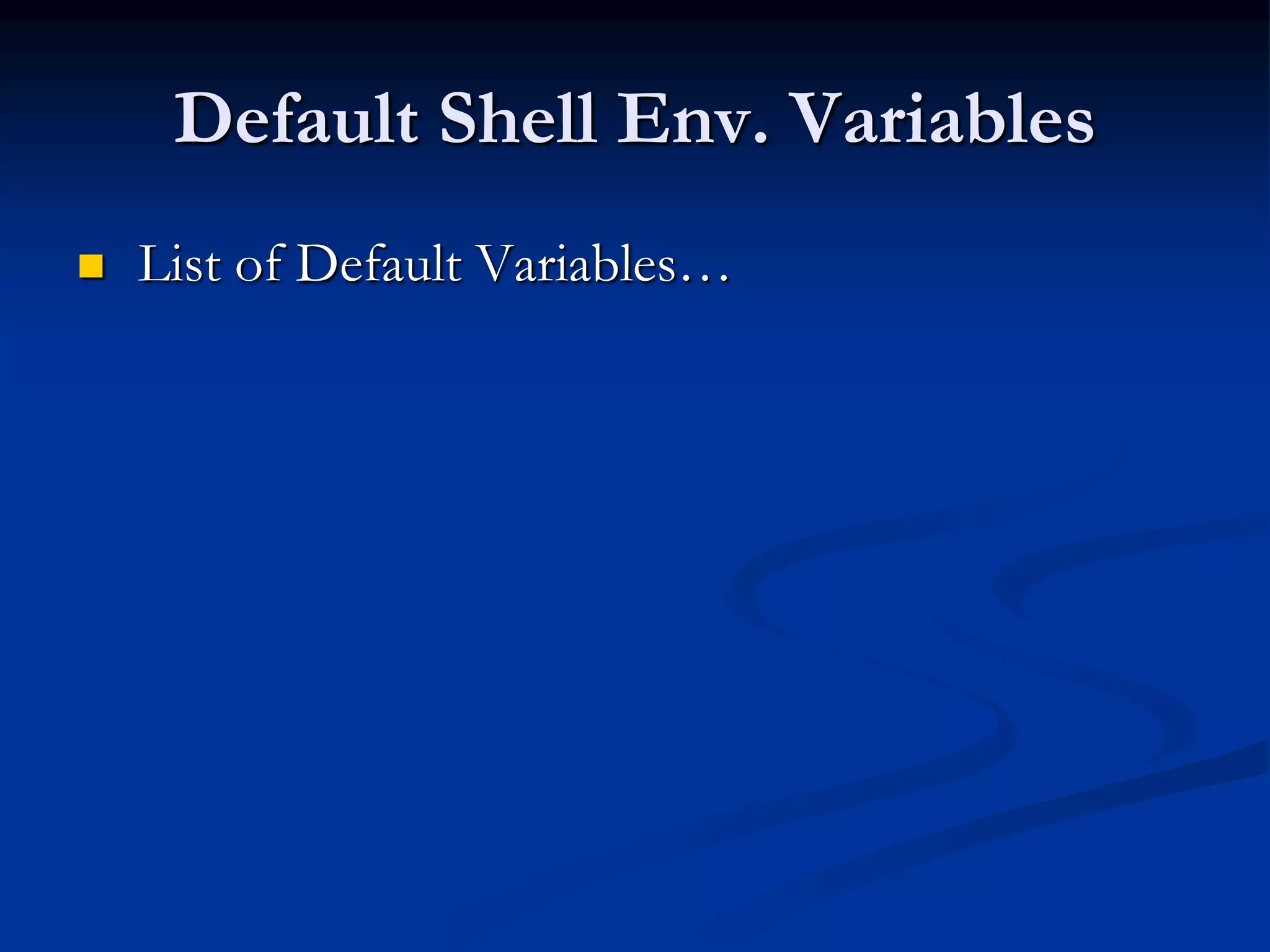
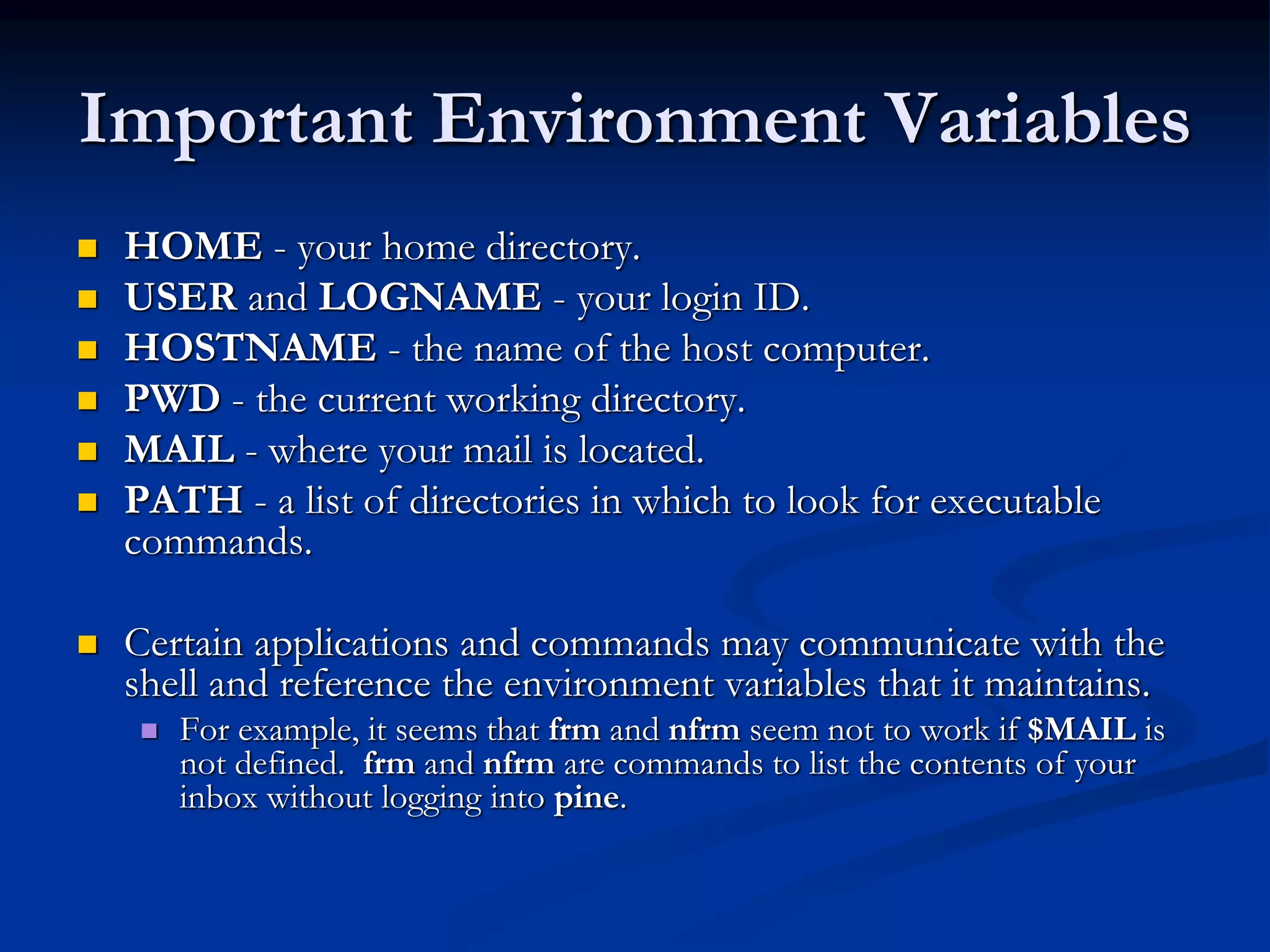
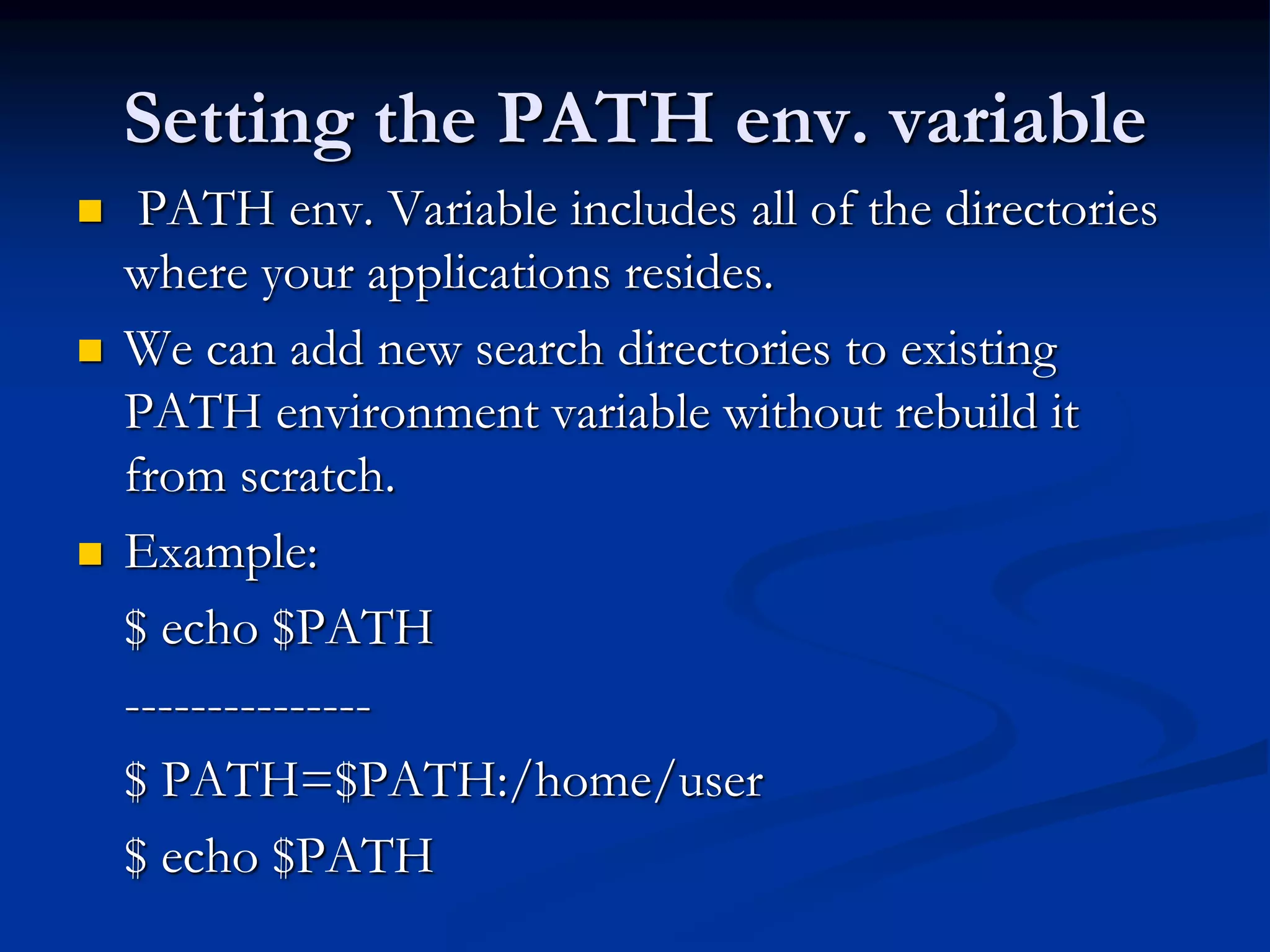

![Variable Arrays
Environment variables can be used as arrays.
So it can hold multiple values.
To set list them in parentheses separated by
comma.
Example:
$ mytest=( one two three four five )
$ echo $mytest
????
$ echo ${mytest[2]}
???](https://image.slidesharecdn.com/linuxshellenv-150103002516-conversion-gate02/75/Linux-shell-env-15-2048.jpg)
